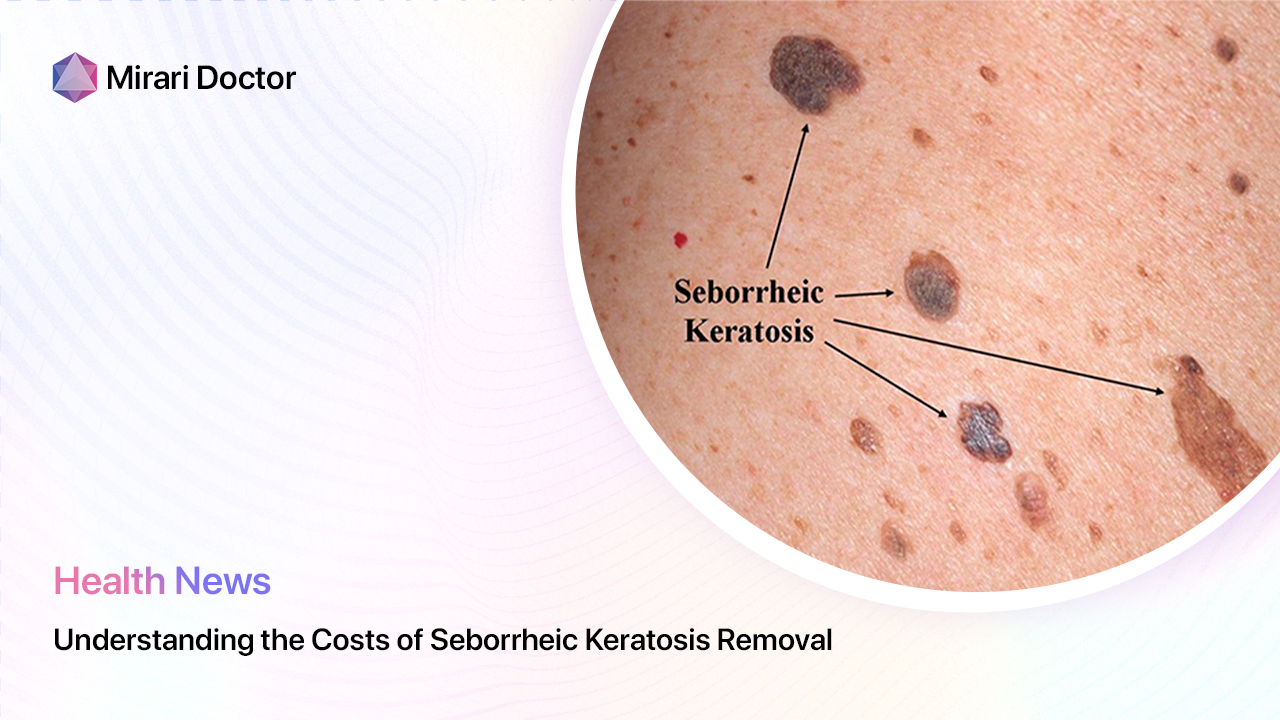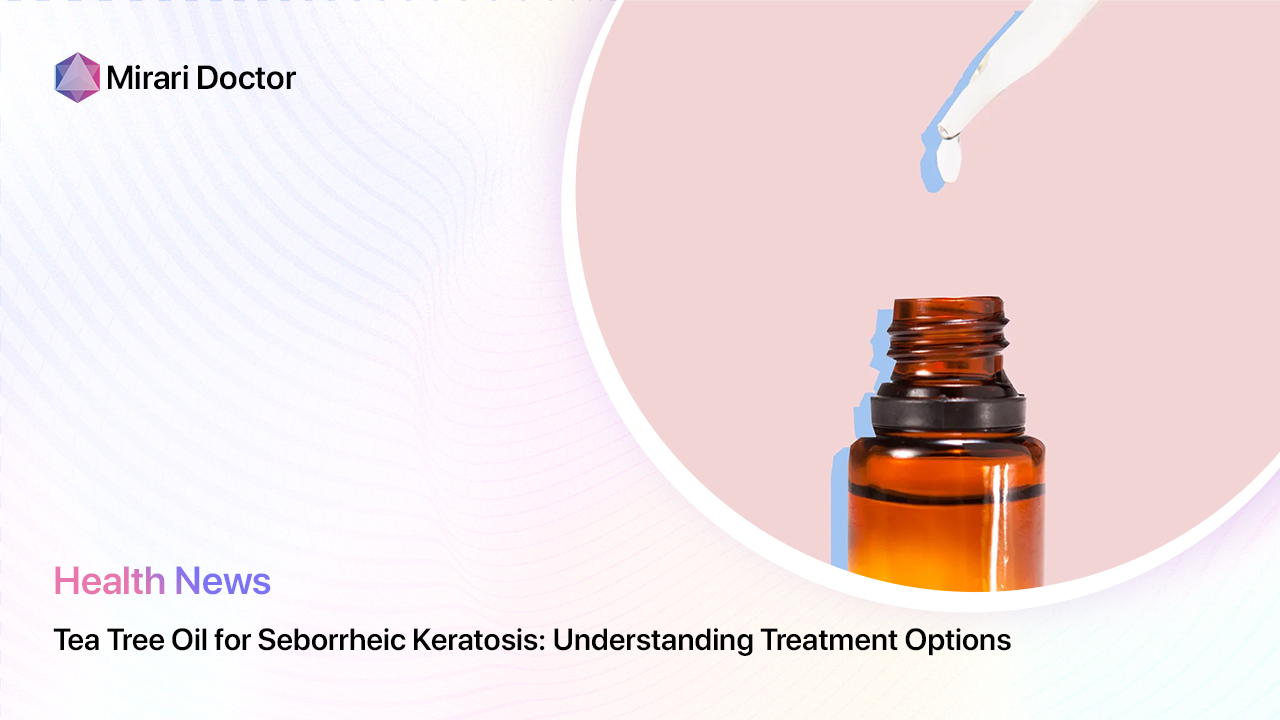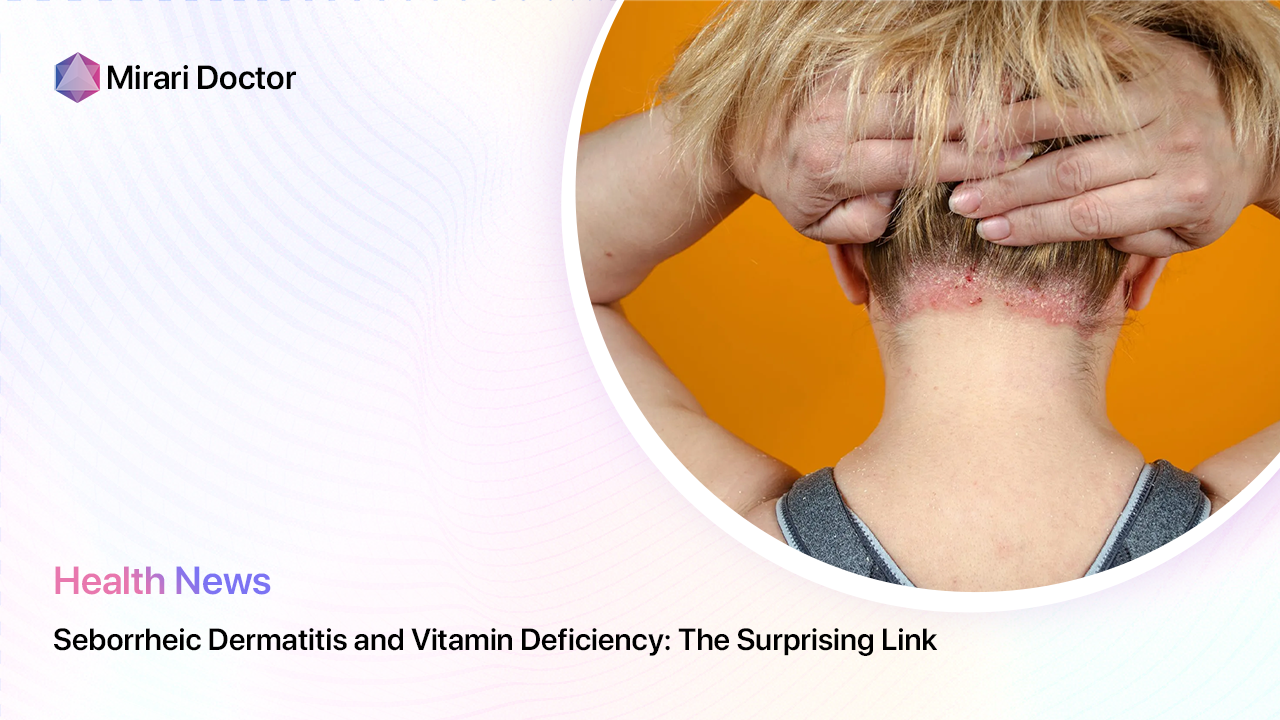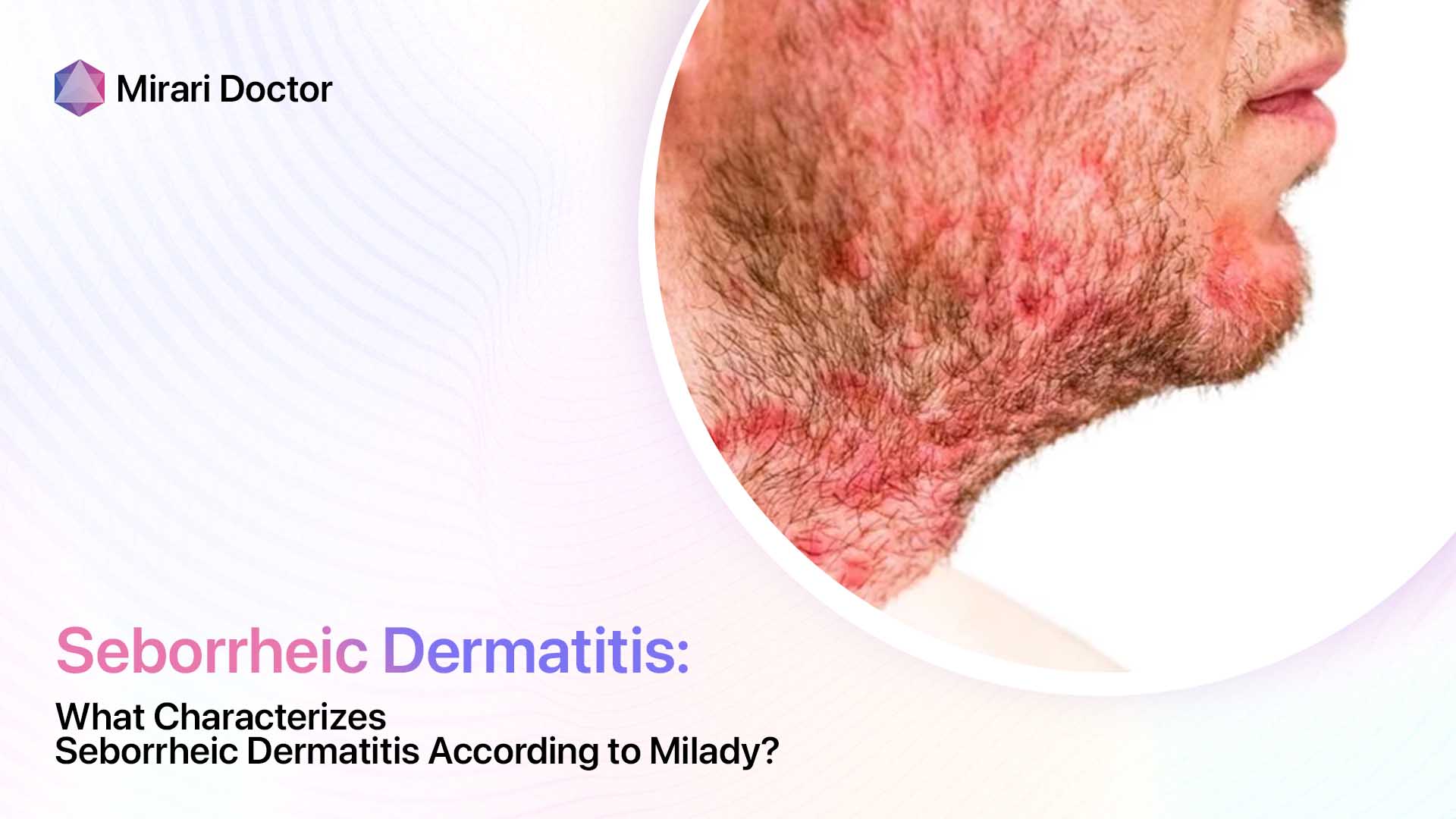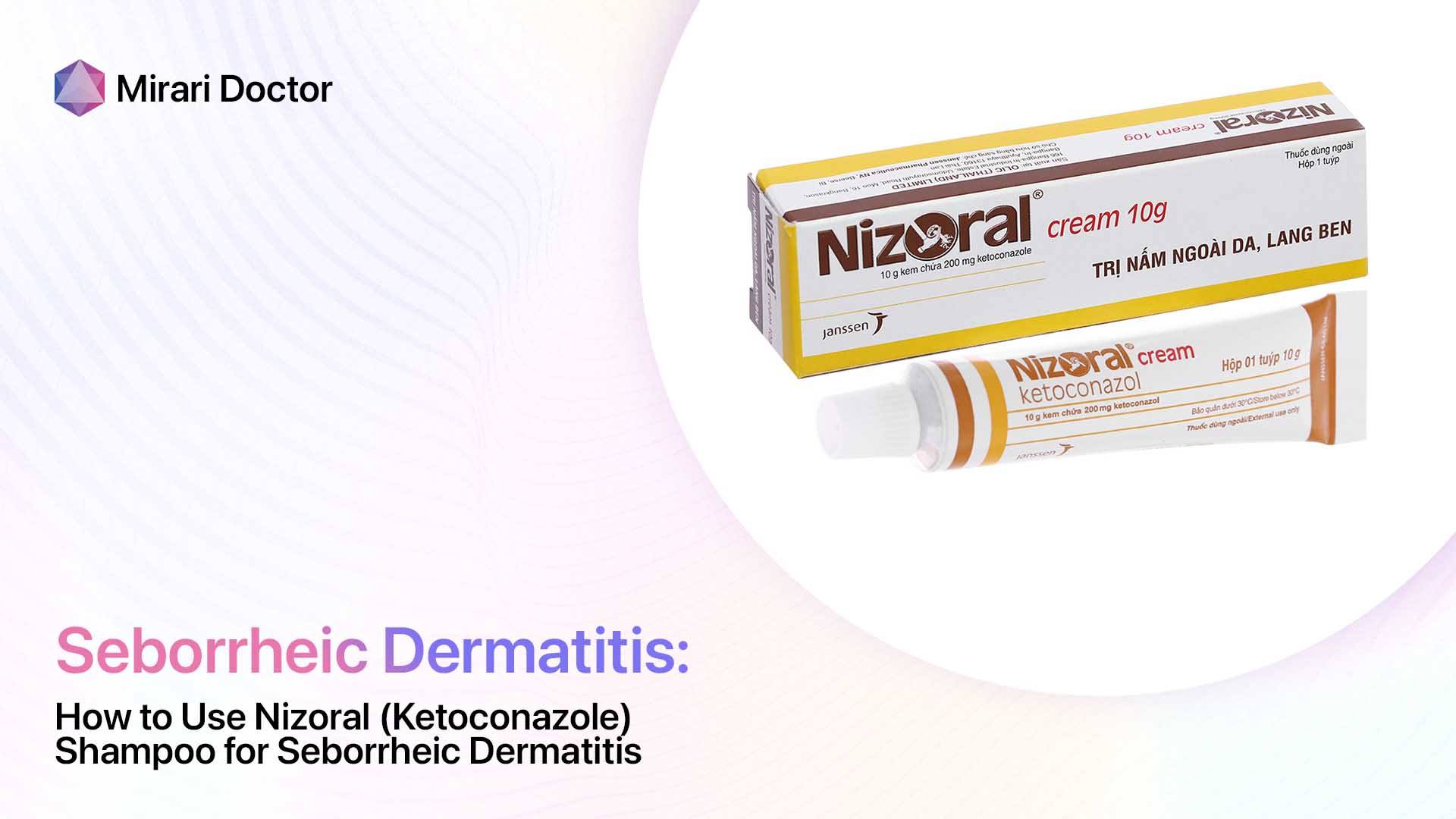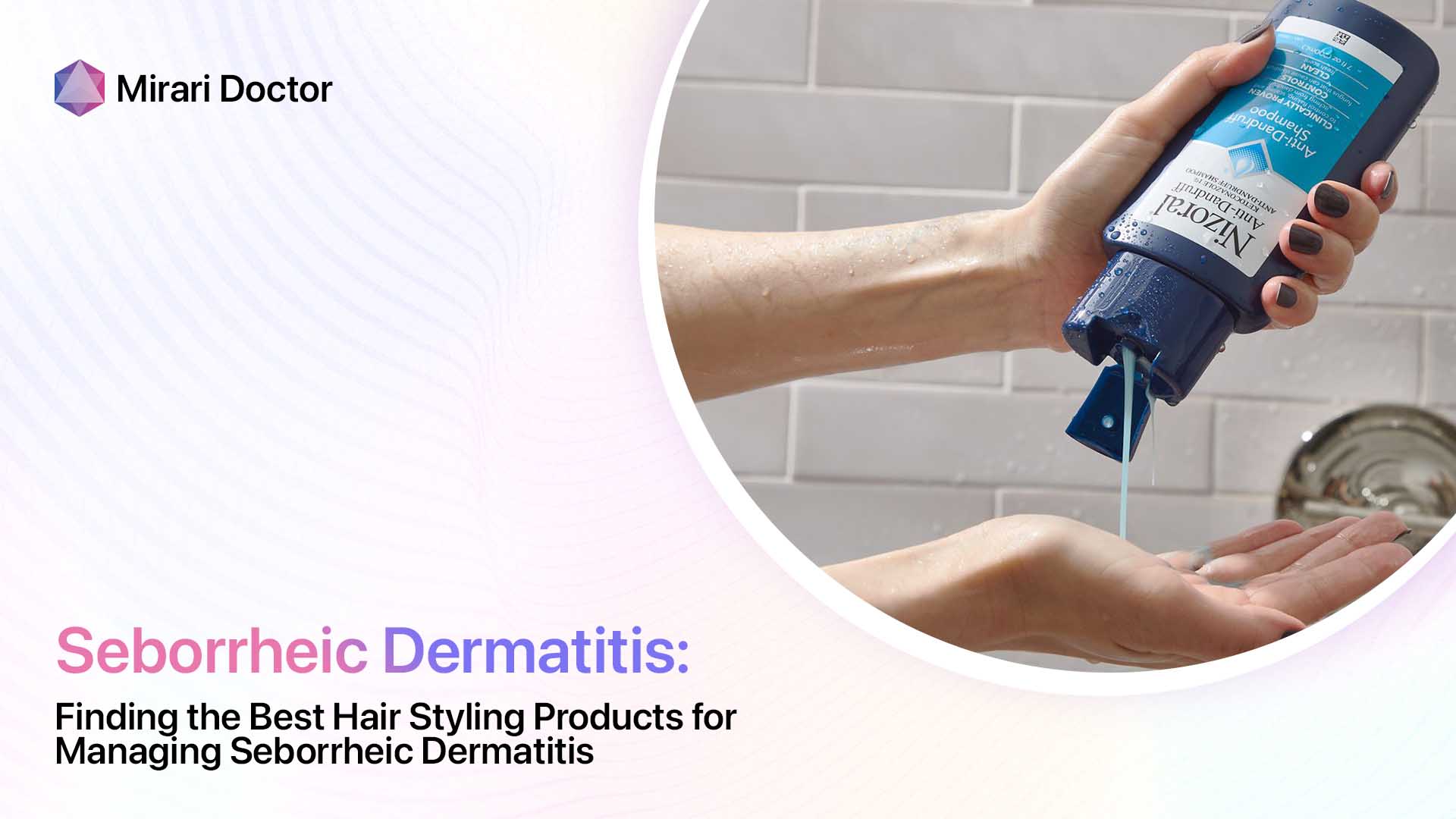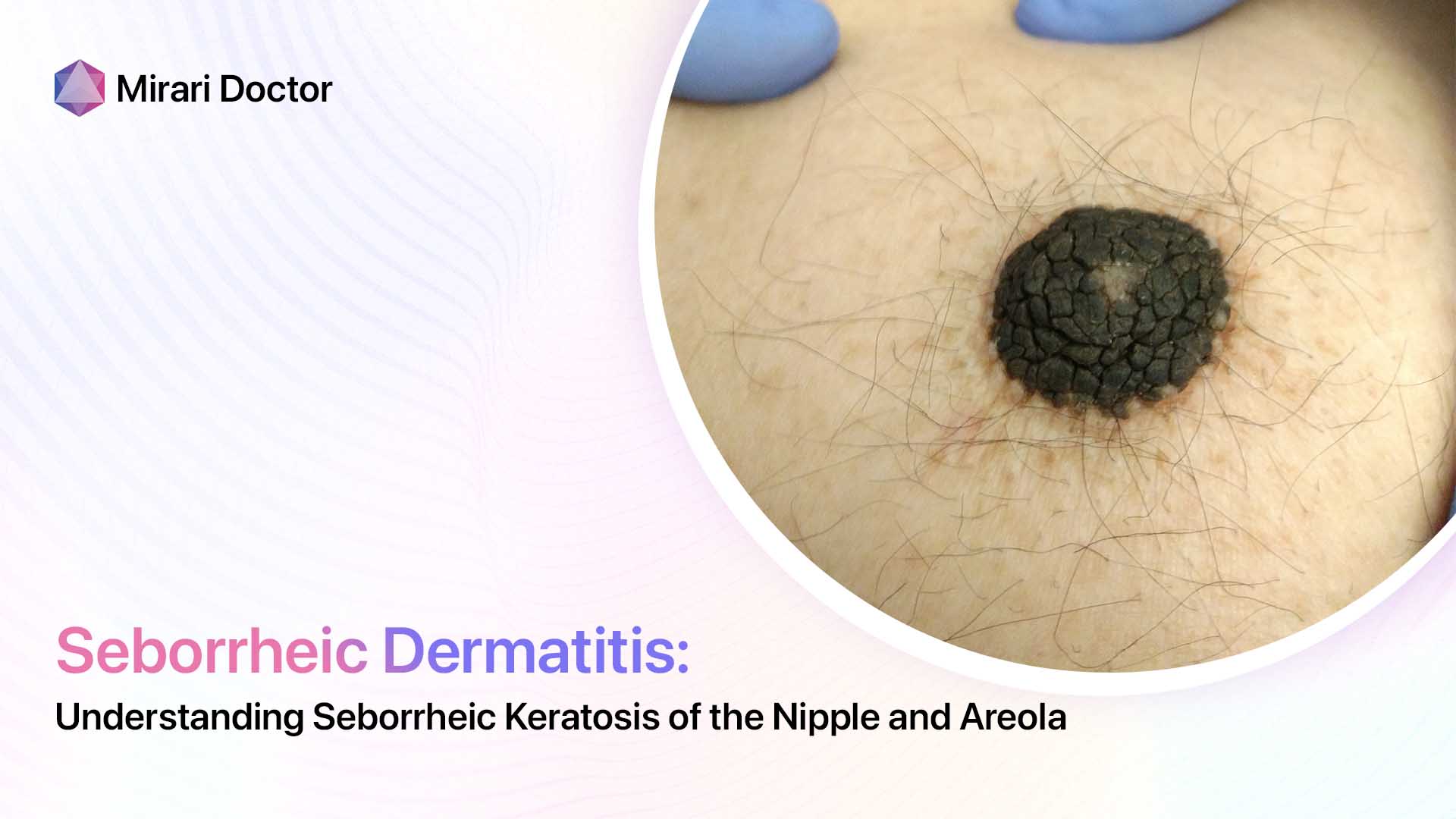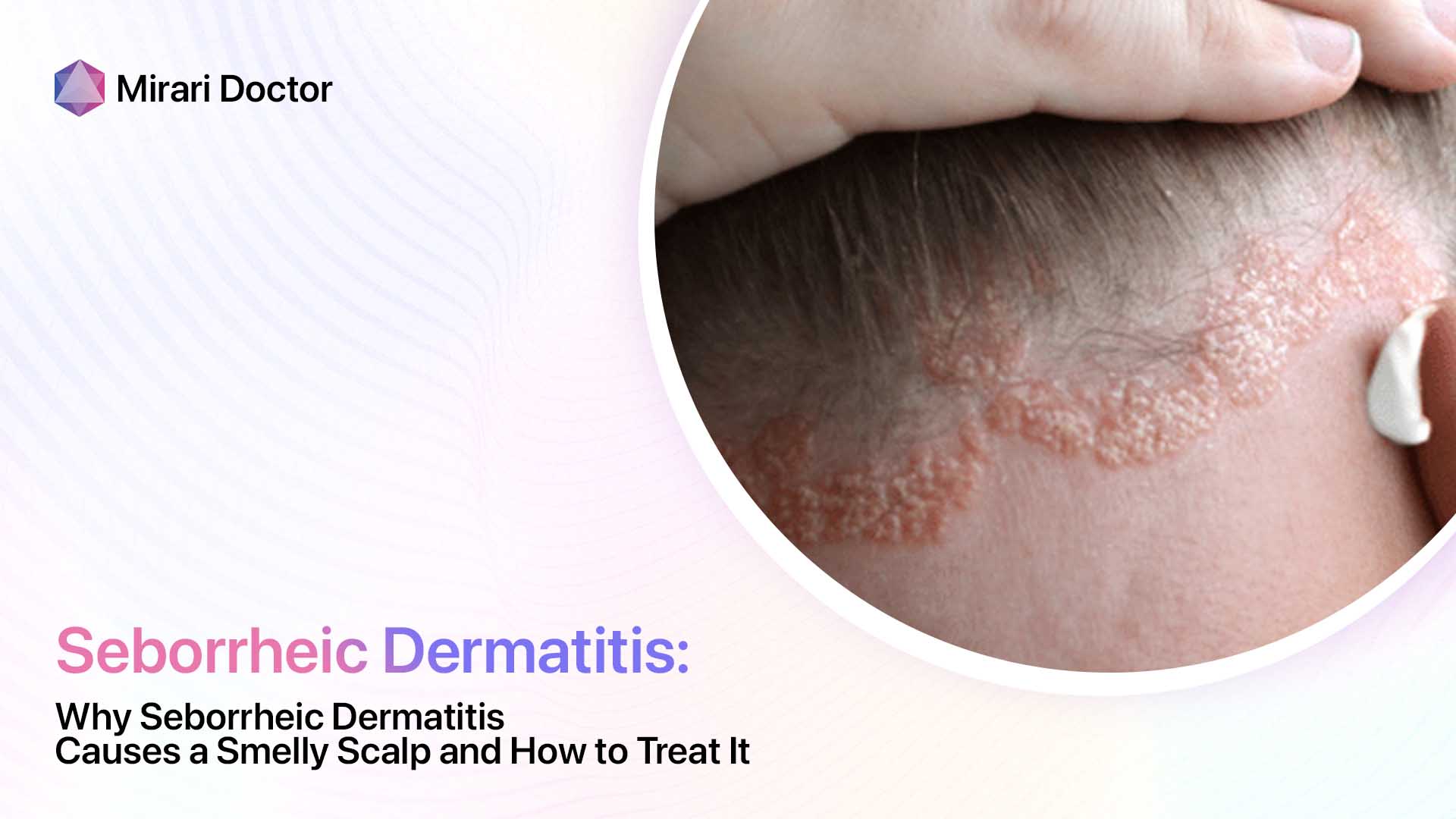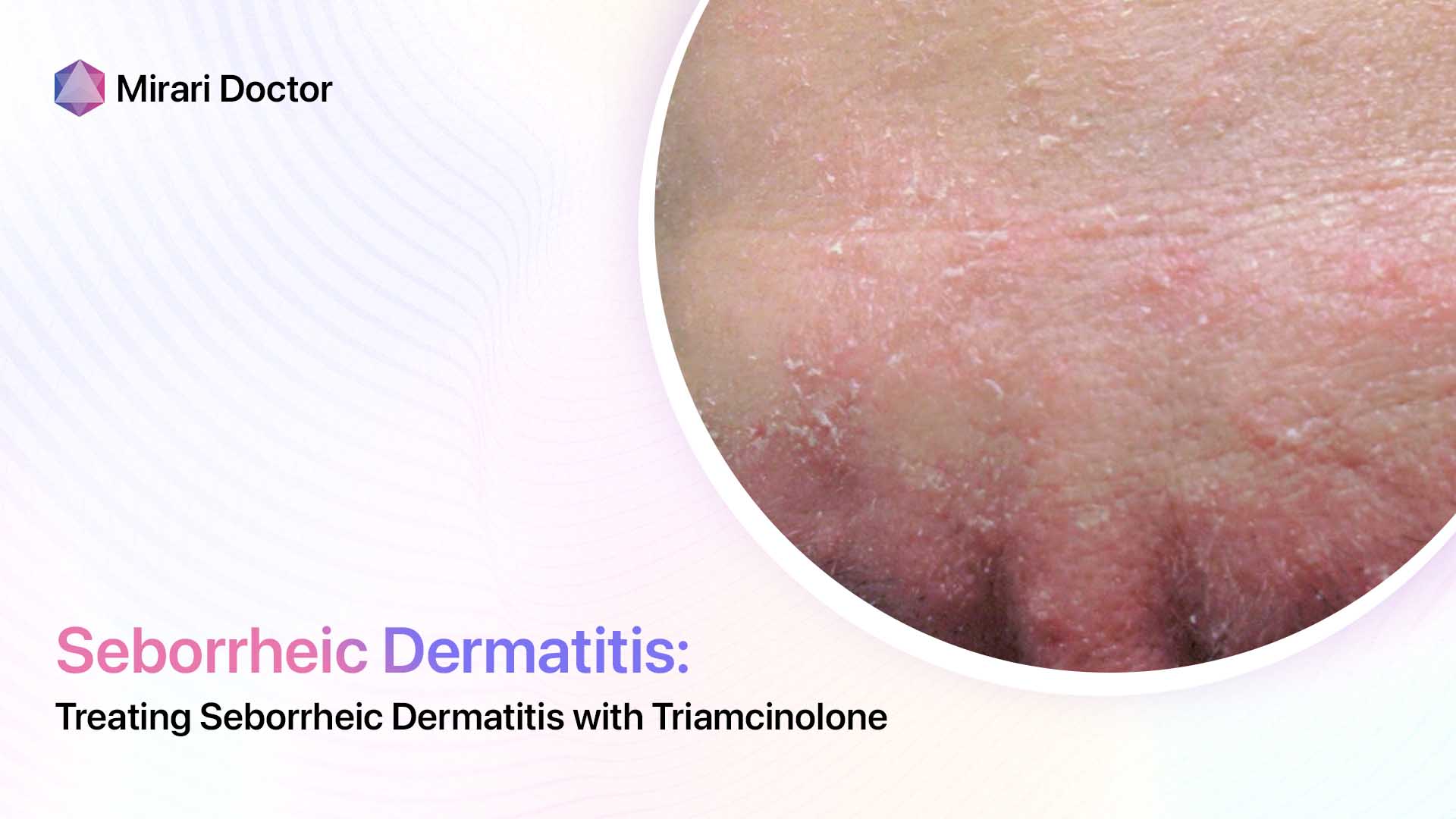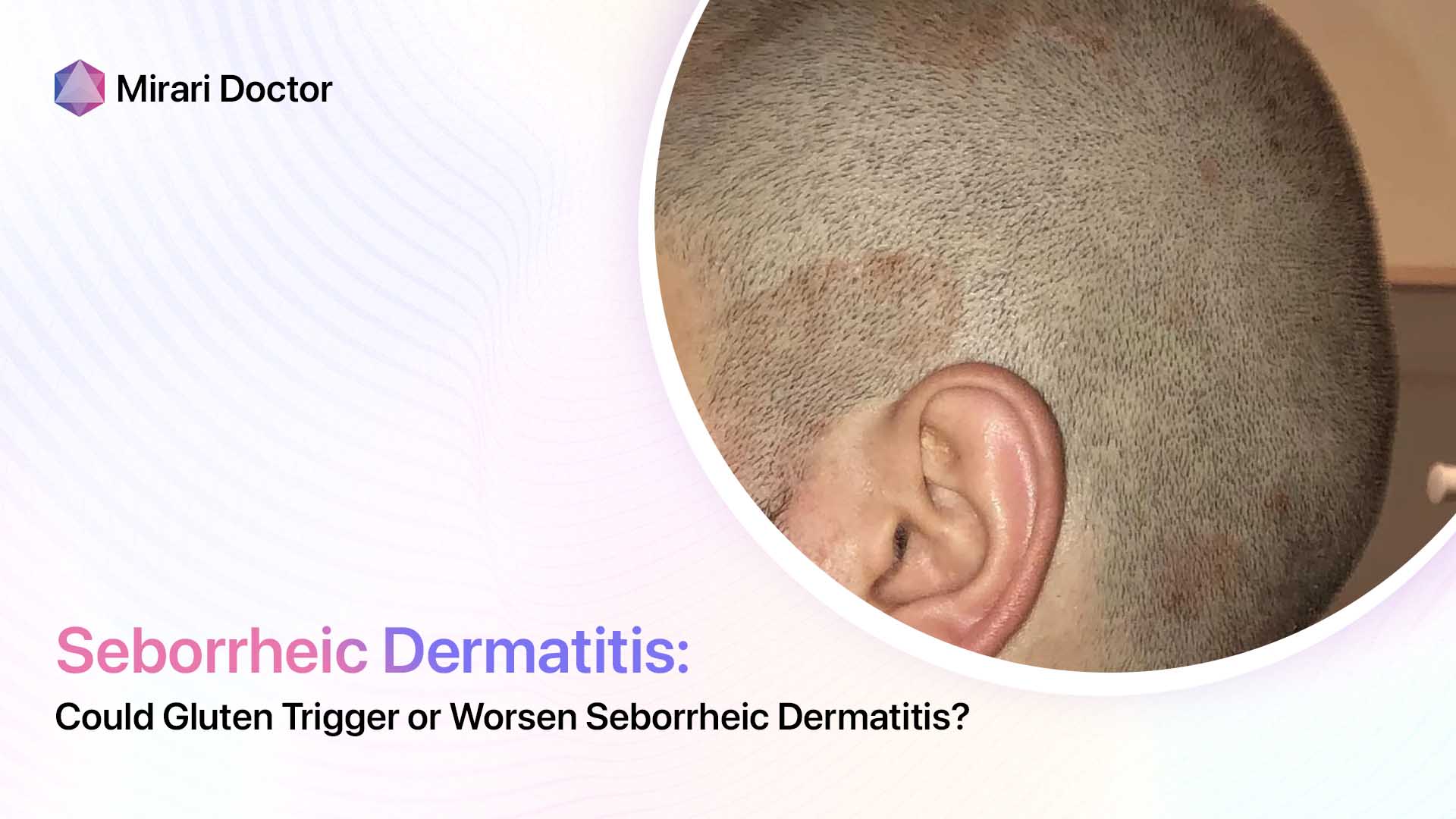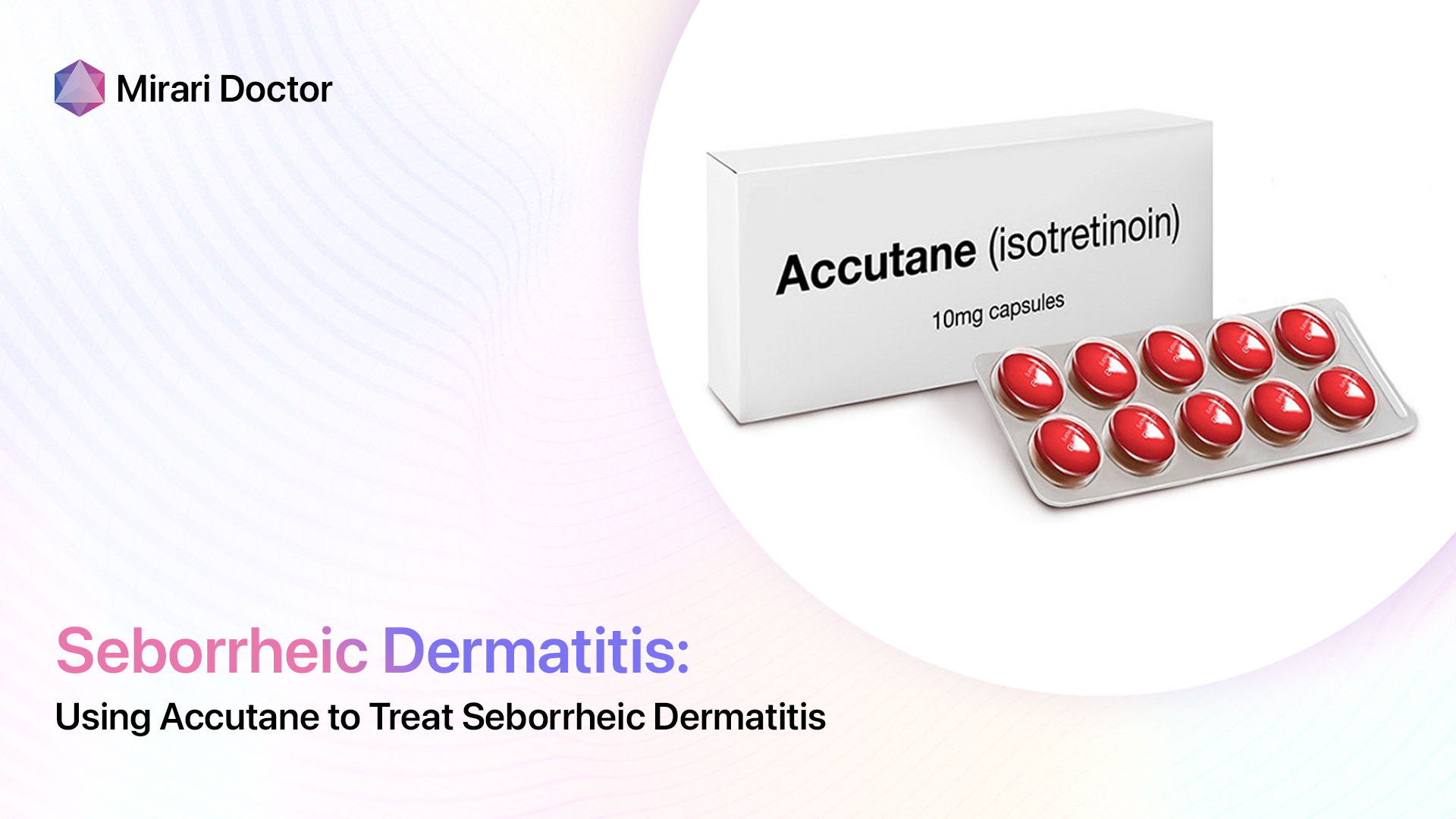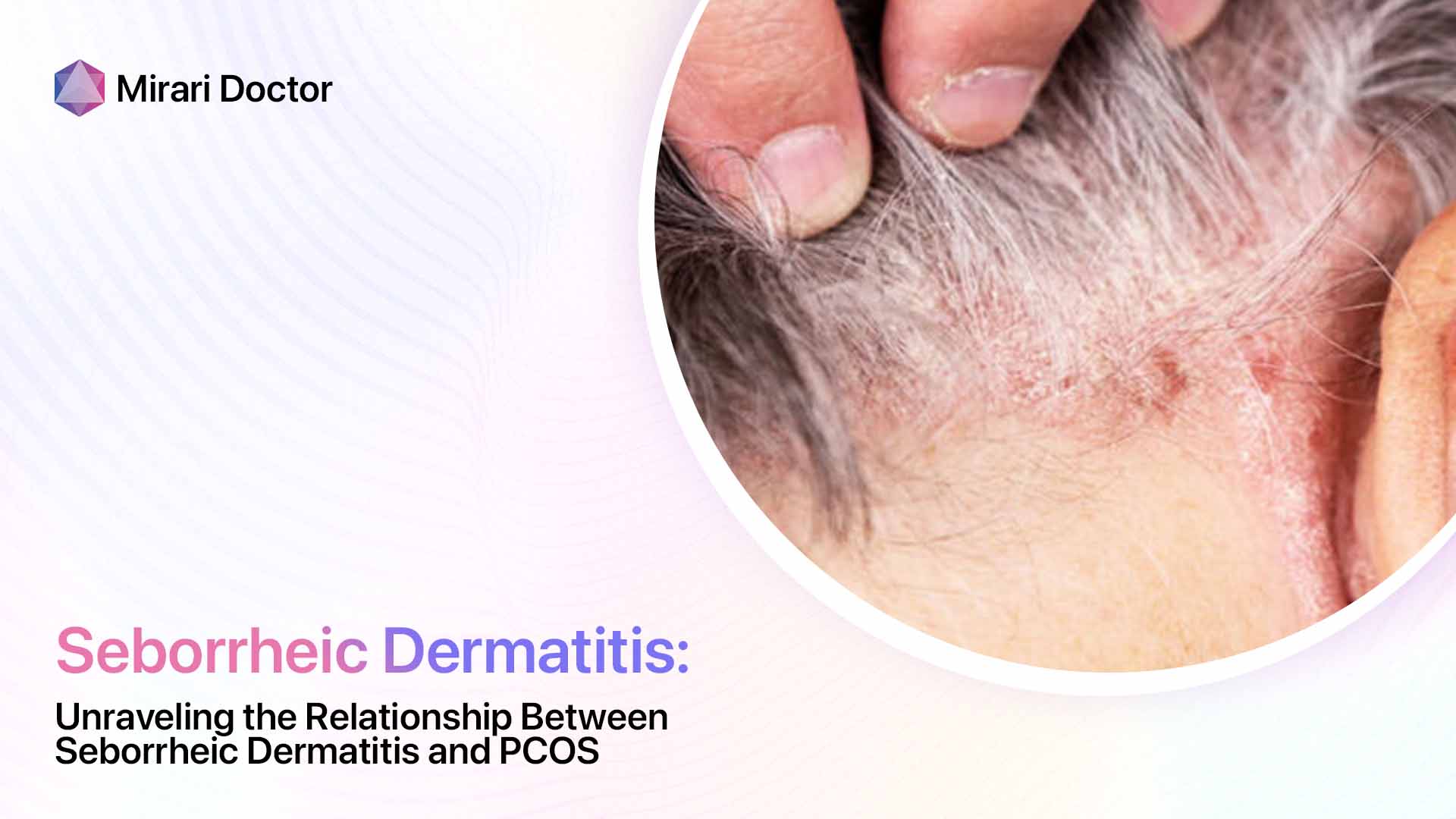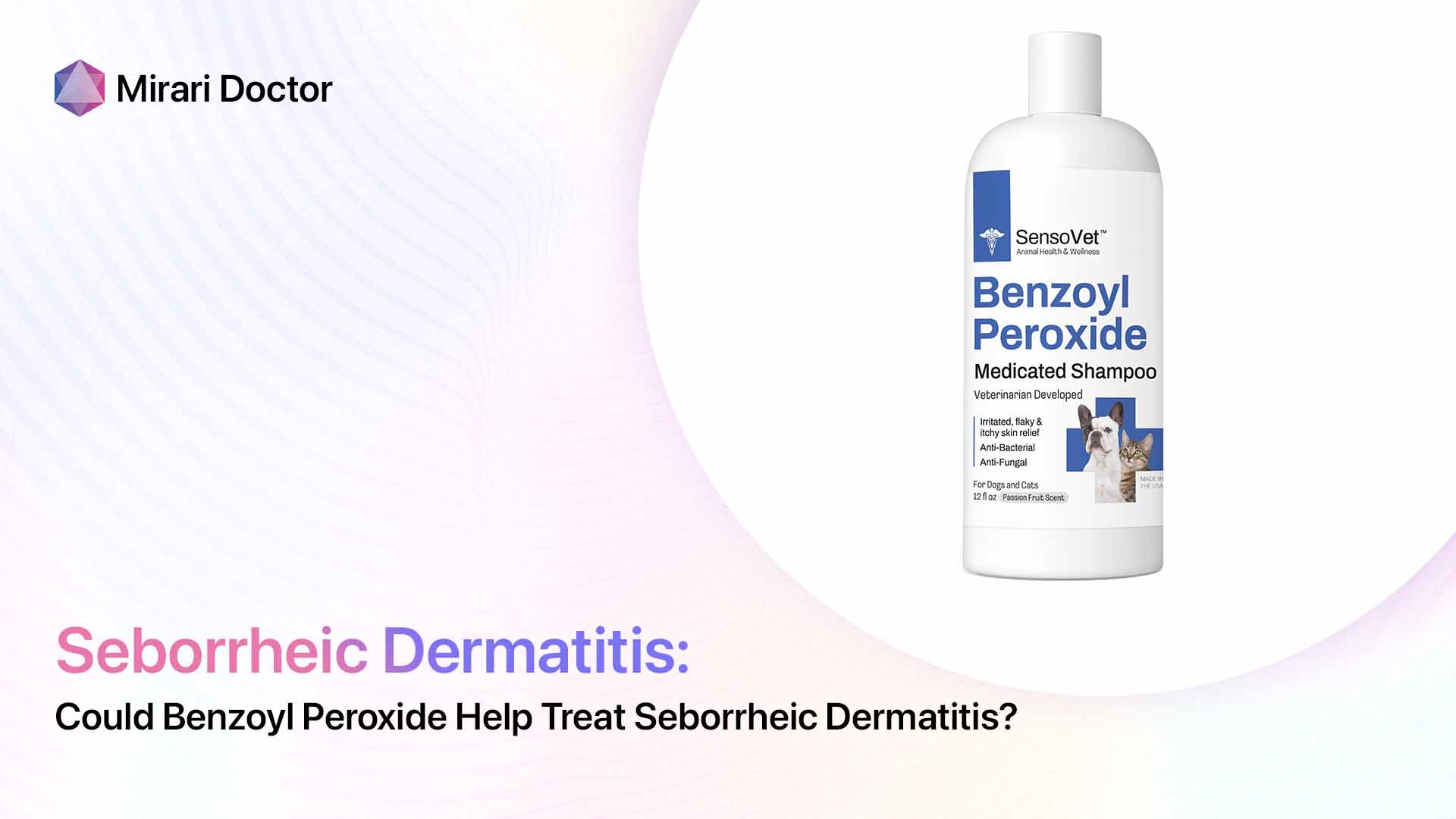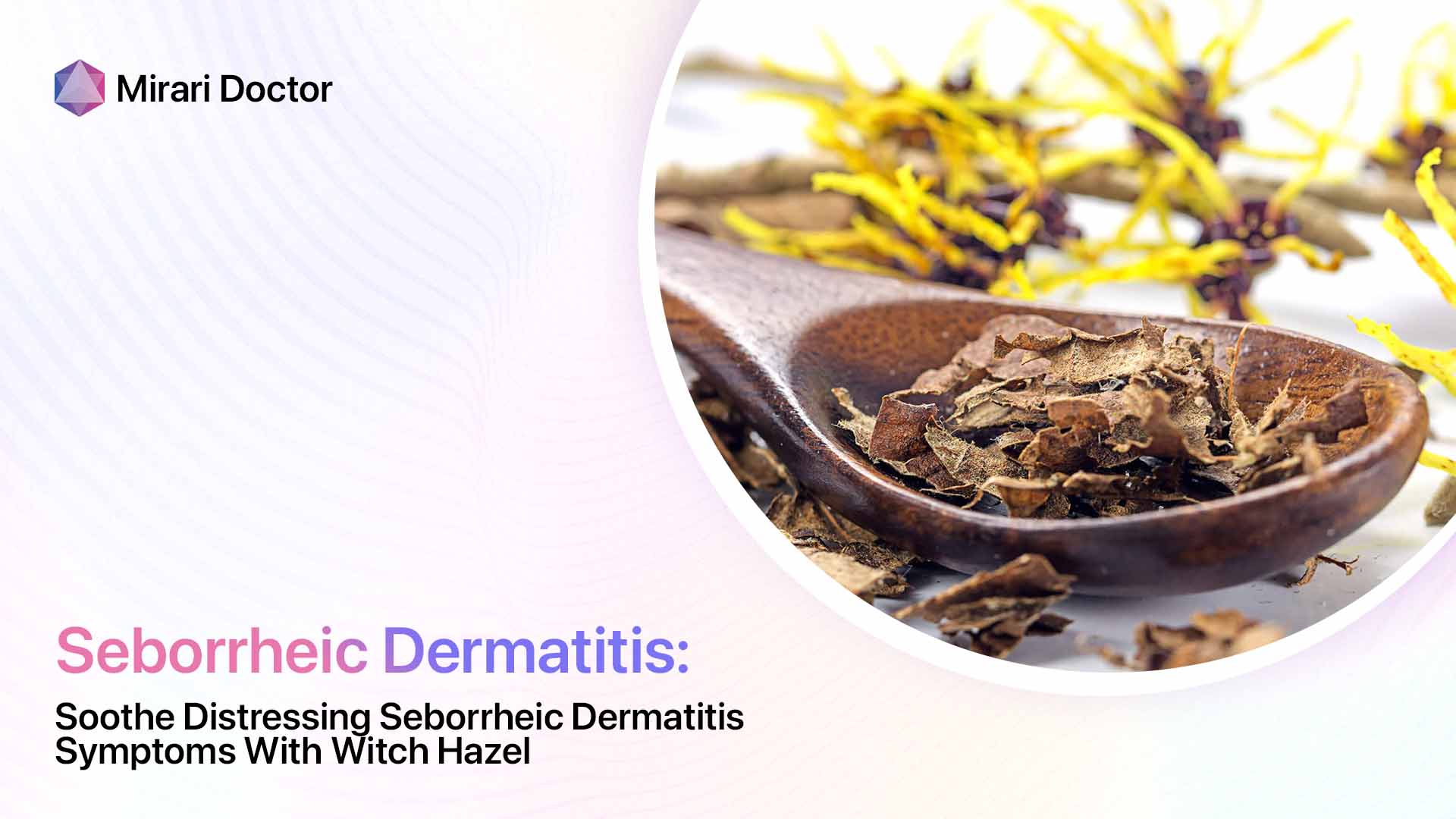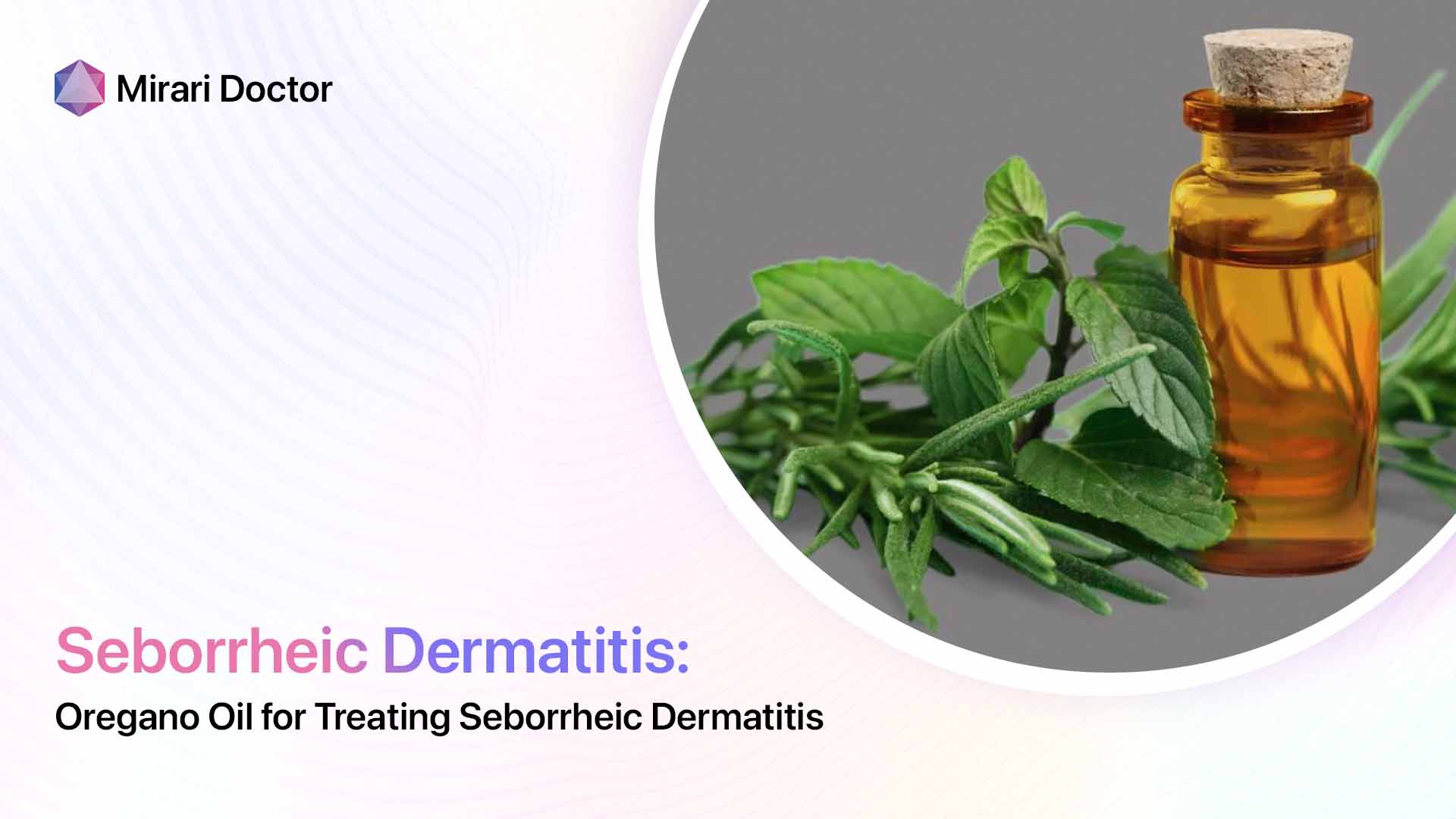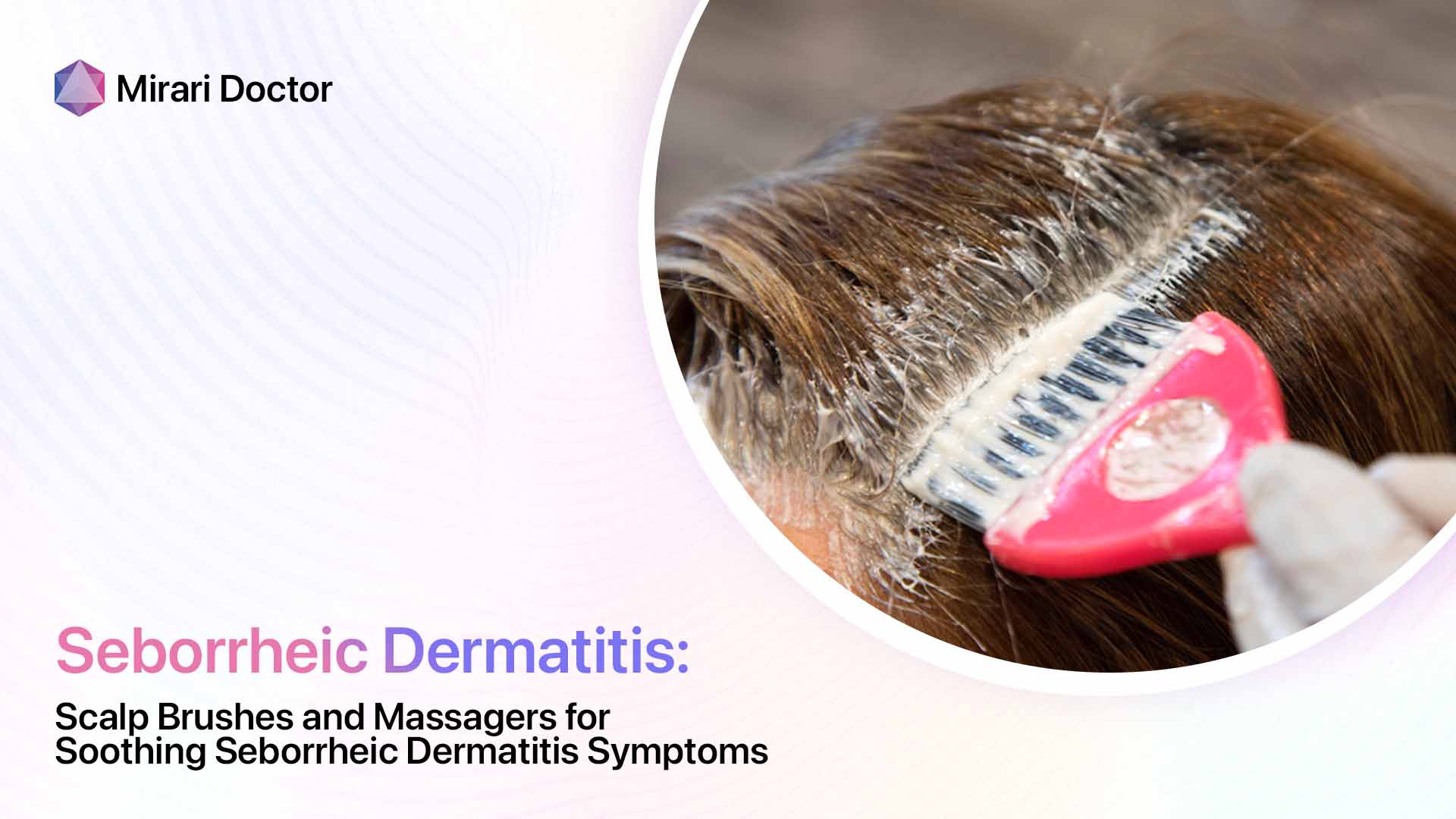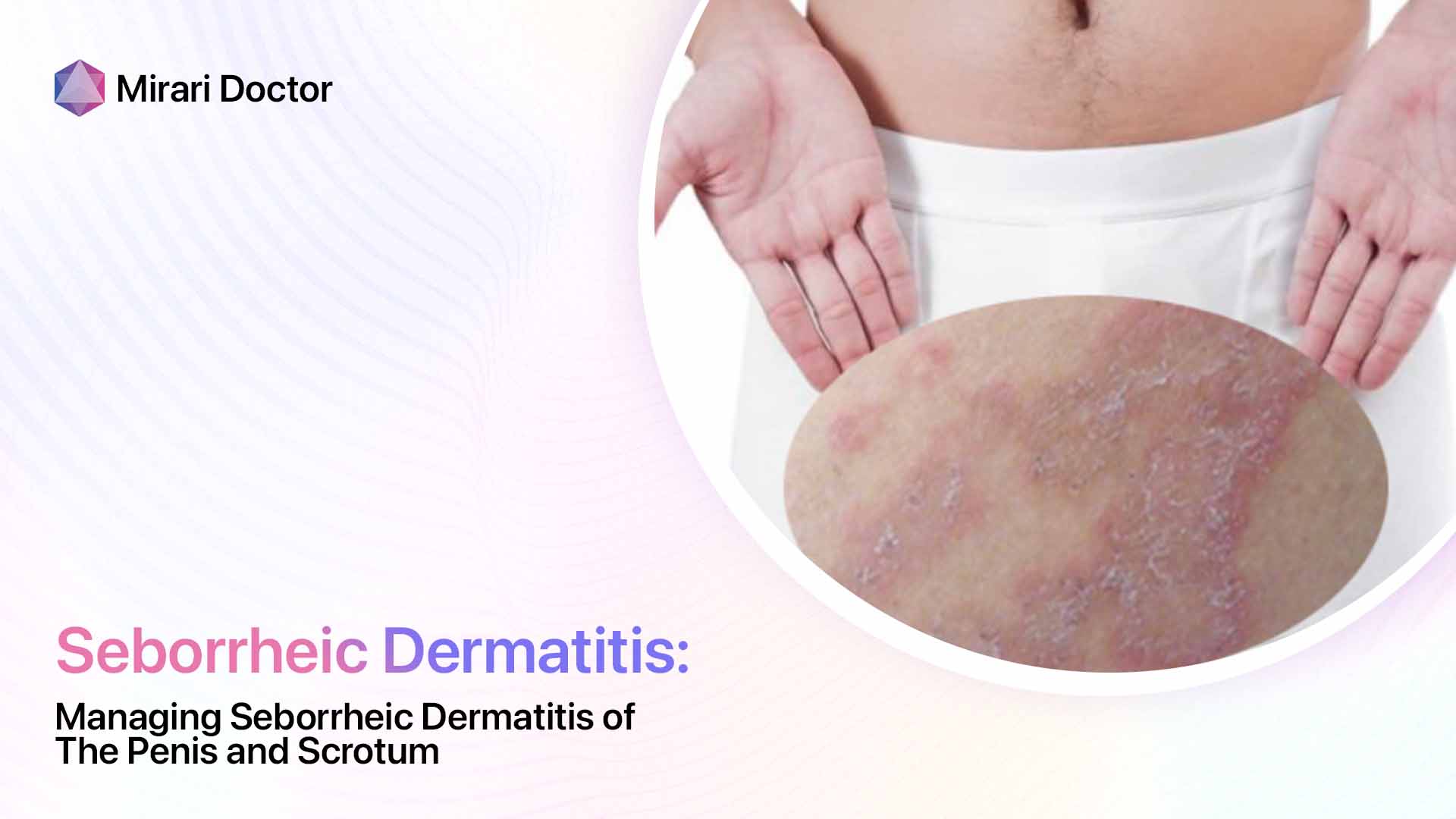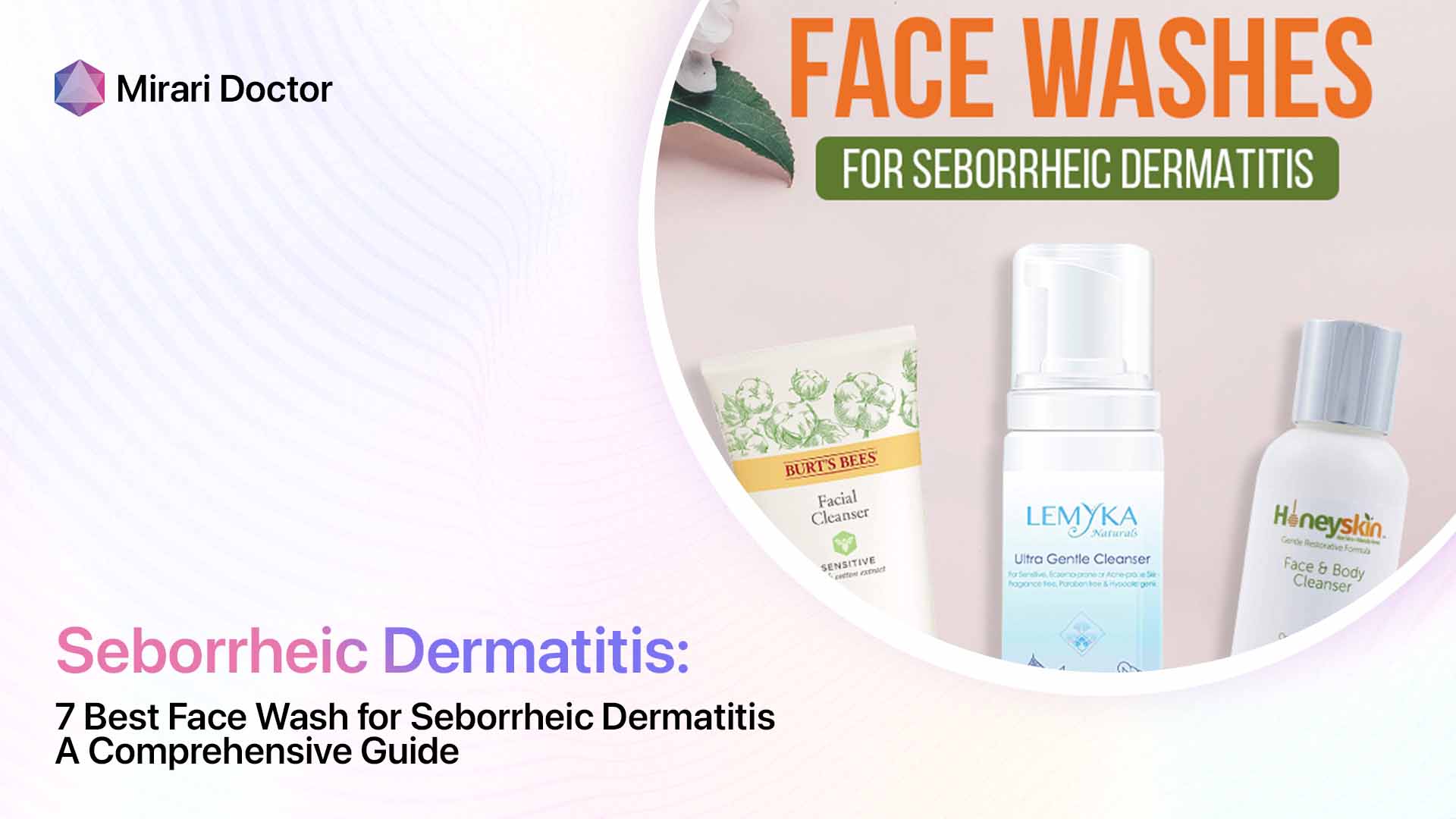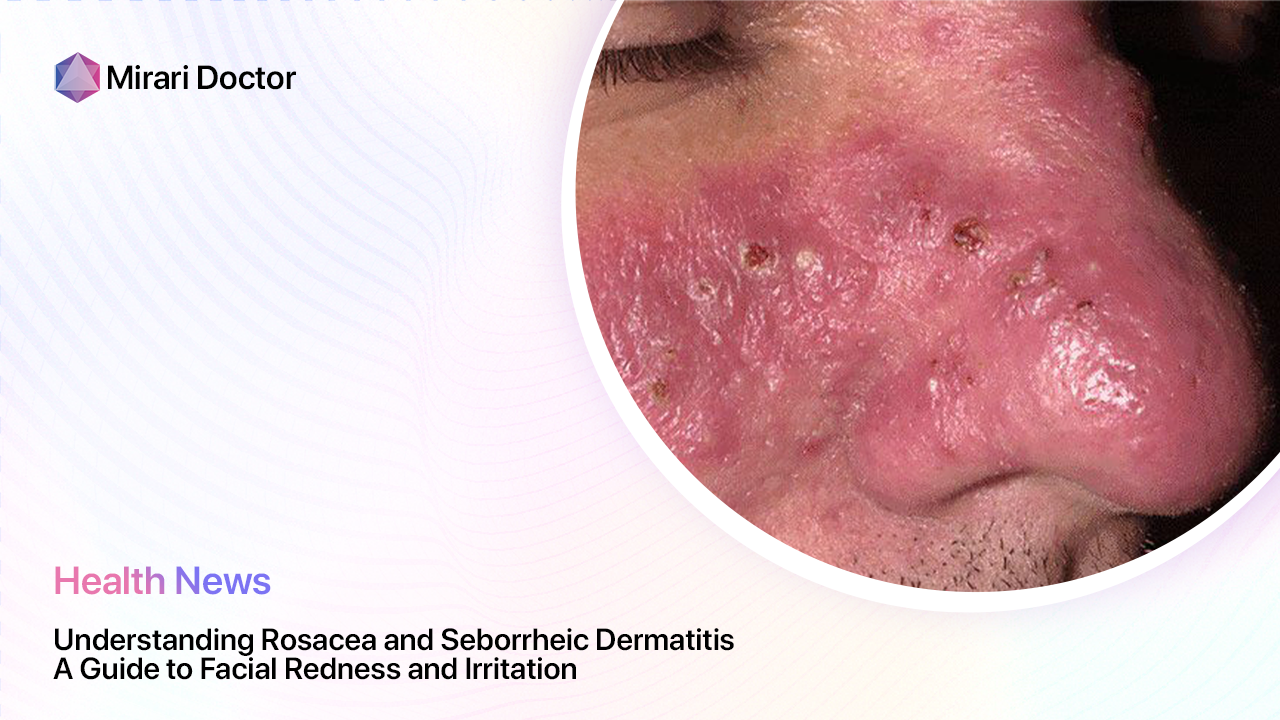
If you’ve ever struggled with persistent facial redness, itching, or scaly patches, you may be dealing with one of two common skin conditions: rosacea or seborrheic dermatitis. These chronic inflammatory disorders can cause significant discomfort and self-consciousness, but with the right knowledge and treatment approach, you can take control of your skin health. In this comprehensive guide, we’ll explore the key differences and similarities between rosacea and seborrheic dermatitis, empowering you with the tools to navigate diagnosis, management, and finding relief.
What is Rosacea?
Rosacea is a chronic skin condition characterized by facial redness, visible blood vessels, and sometimes, acne-like bumps. It typically affects the central part of the face, including the cheeks, nose, chin, and forehead. While the exact cause of rosacea remains unknown, it’s thought to involve a combination of genetic and environmental factors.
Symptoms of Rosacea
- Facial flushing and redness: Rosacea often begins with a tendency to blush or flush easily. Over time, this redness may become persistent and more intense.
- Visible blood vessels: As rosacea progresses, small blood vessels on the nose and cheeks may become enlarged and visible.
- Bumps and pimples: Some people with rosacea develop acne-like breakouts, which can resemble the bumps seen in conditions like eczema.
- Burning or stinging sensation: Rosacea can cause a burning or stinging feeling in the affected areas, which may be related to the underlying inflammation.
Causes of Rosacea
While the precise cause of rosacea is still a mystery, researchers believe that several factors may contribute to its development:
- Genetics: Having a family history of rosacea increases your risk of developing the condition, suggesting a genetic component.
- Sun exposure: UV radiation from the sun is a common trigger for rosacea flare-ups, as it can cause skin inflammation and damage.
- Certain medications: Some drugs, such as corticosteroids and vasodilators, have been linked to the development or worsening of rosacea symptoms.
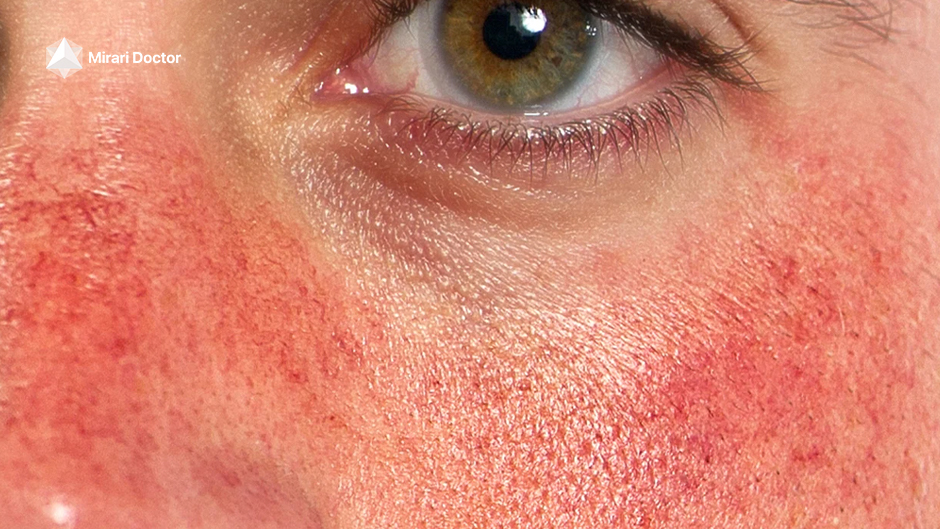
What is Seborrheic Dermatitis?
Seborrheic dermatitis, also known as seborrheic eczema or sebderm, is a common skin condition that causes red, scaly patches on the scalp, face, and sometimes other parts of the body. It’s often associated with an overgrowth of a yeast called Malassezia, which is normally present on the skin.
Symptoms of Seborrheic Dermatitis
- Red, scaly patches: Seborrheic dermatitis typically appears as red, greasy-looking patches with white or yellowish scales. These patches can occur on the scalp (as dandruff), eyebrows, sides of the nose, and beard area.
- Itchy skin: The affected areas may feel itchy or burn, especially when the skin is dry or irritated.
- Greasy or oily appearance: Seborrheic dermatitis often gives the skin a shiny, oily appearance due to the overproduction of sebum (skin oils).
- Dandruff: When seborrheic dermatitis affects the scalp, it can cause flaking and scaling, similar to the symptoms of dandruff or other conditions like perioral dermatitis.
Causes of Seborrheic Dermatitis
The exact cause of seborrheic dermatitis is unknown, but several factors are thought to play a role:
- Malassezia yeast overgrowth: This yeast is a normal part of the skin’s microbiome, but an overgrowth can trigger inflammation and the characteristic symptoms of seborrheic dermatitis.
- Stress: Emotional stress has been identified as a potential trigger for seborrheic dermatitis flare-ups, possibly due to its impact on the immune system.
- Cold weather: Seborrheic dermatitis often worsens during the winter months, when dry air and indoor heating can exacerbate skin dryness and irritation.
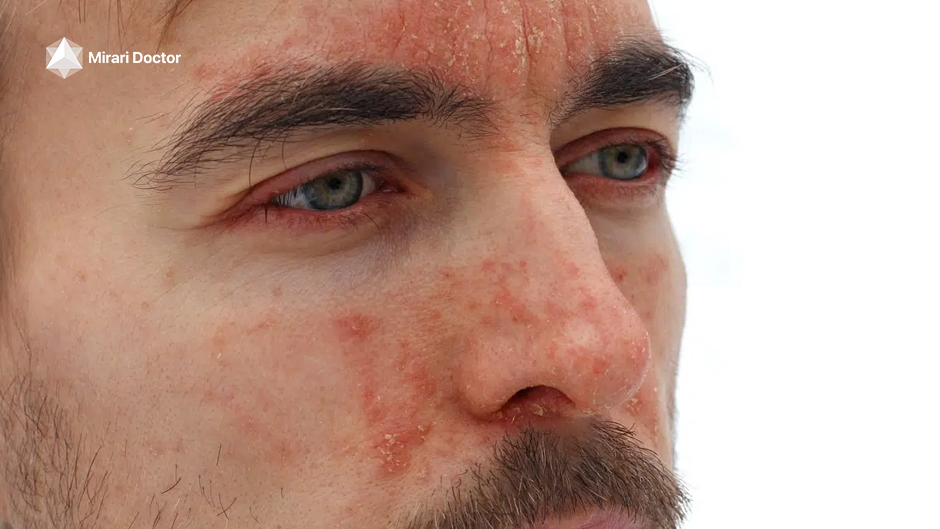
Telling Rosacea and Seborrheic Dermatitis Apart
While both rosacea and seborrheic dermatitis can cause facial redness and irritation, there are some key differences that can help distinguish between the two conditions.
Location
- RosaceRosacea primarily affects the central part of the face, including the cheeks, nose, chin, and forehead.
- Seborrheic dermatitis: Seborrheic dermatitis can affect the scalp, eyebrows, eyelids, sides of the nose, and beard area. It may also involve other parts of the body, such as the chest or back.
Appearance
- RosaceThe hallmark symptoms of rosacea include persistent facial flushing, visible blood vessels, and sometimes, acne-like bumps or pustules.
- Seborrheic dermatitis: Seborrheic dermatitis is characterized by red, greasy-looking patches with white or yellowish scales, along with prominent itching and flaking.
Can You Have Both Rosacea and Seborrheic Dermatitis?
Overlapping Conditions
Yes, it’s possible to have both rosacea and seborrheic dermatitis simultaneously. In fact, studies have shown that a significant percentage of people with rosacea also have seborrheic dermatitis on their face. This overlap can make diagnosis and treatment more challenging, as the two conditions may share some common triggers, such as sun exposure.
If you suspect that you may have both rosacea and seborrheic dermatitis, it’s essential to consult with a dermatologist who can provide an accurate diagnosis and develop a tailored treatment plan that addresses both conditions. By working closely with your healthcare provider, you can find the most effective strategies for managing your symptoms and achieving clearer, more comfortable skin.
Living with Rosacea and Seborrheic Dermatitis
Treatment Options
While there is no cure for either rosacea or seborrheic dermatitis, a variety of treatment options can help control symptoms and minimize flare-ups.
- Rosacea: Treatment for rosacea often involves a combination of topical medications (such as metronidazole or azelaic acid), oral antibiotics (like doxycycline or minocycline), and in severe cases, laser therapy to reduce redness and visible blood vessels. Your dermatologist may also recommend gentle skincare products and sun protection measures to minimize irritation and prevent flare-ups.
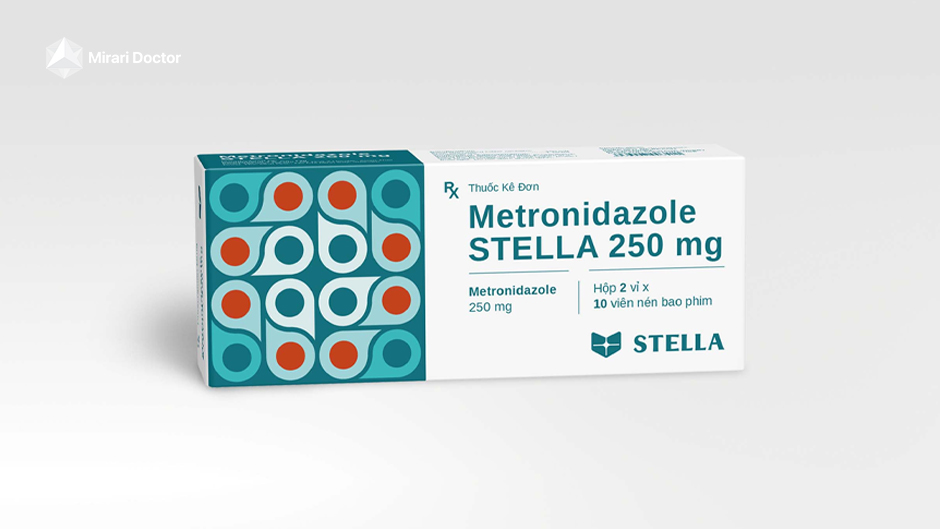
- Seborrheic dermatitis: Treatment for seborrheic dermatitis typically includes antifungal shampoos (containing ingredients like ketoconazole or selenium sulfide), topical corticosteroids to reduce inflammation, and moisturizers to combat dryness and flaking. In some cases, oral antifungal medications may be necessary to control more severe or persistent symptoms.
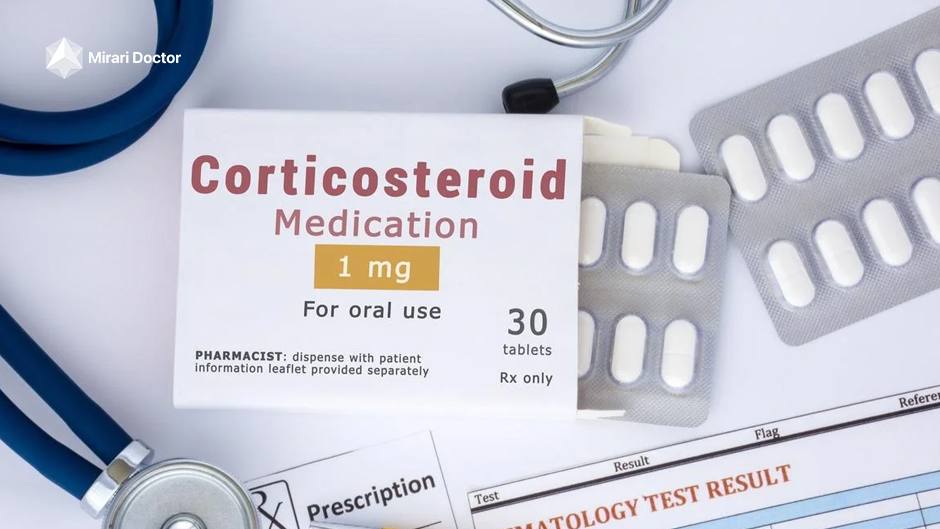
Daily Skincare Routine
Developing a gentle, non-irritating skincare routine is crucial for managing both rosacea and seborrheic dermatitis. Here are some tips to keep in mind:
- Use mild, fragrance-free cleansers and moisturizers that are designed for sensitive skin. Avoid harsh scrubs, exfoliants, or products containing alcohol, which can further irritate the skin.
- Apply a broad-spectrum sunscreen with an SPF of at least 30 daily, especially if you have rosacea. Sun protection can help prevent flare-ups and minimize skin damage.
- Be gentle when cleansing your face, using lukewarm water and patting the skin dry with a soft towel. Avoid rubbing or scrubbing the skin, which can exacerbate redness and irritation.
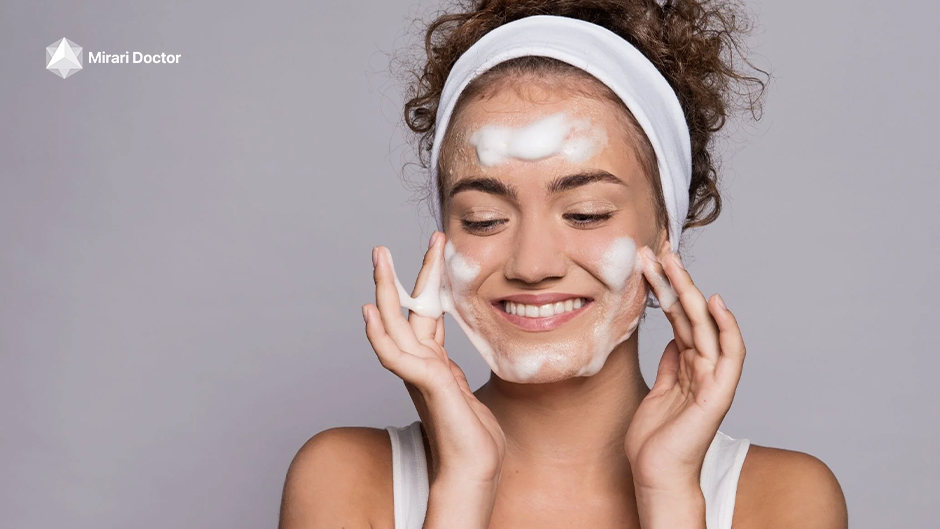
Identifying and Avoiding Triggers
Both rosacea and seborrheic dermatitis can be triggered by certain factors, which may vary from person to person. Identifying and avoiding your personal triggers can help reduce the frequency and severity of flare-ups.
- Common triggers for rosacea include sun exposure, hot or spicy foods, alcohol, extreme temperatures, and emotional stress. Keeping a symptom diary can help you pinpoint your individual triggers and make necessary lifestyle changes.
- For seborrheic dermatitis, stress management techniques like meditation, deep breathing, or exercise can help reduce stress and prevent flare-ups of both conditions.

The Emotional Impact of Facial Redness
Living with rosacea or seborrheic dermatitis can take a toll on your emotional well-being. The persistent facial redness, flaking, and irritation can lead to feelings of self-consciousness and even social anxiety. It’s not uncommon for people with these conditions to feel frustrated, embarrassed, or helpless, especially during flare-ups.
It’s important to remember that you’re not alone in your struggles. Many people with rosacea or seborrheic dermatitis experience similar emotions, and it’s crucial to be kind to yourself and practice self-care. Engaging in stress-reducing activities, such as meditation, deep breathing, or gentle exercise, can help manage both the physical symptoms and the emotional impact of these conditions.

Finding Support for Rosacea and Seborrheic Dermatitis
Dermatologist Consultation
If you suspect that you have rosacea or seborrheic dermatitis, the first step is to consult with a dermatologist. These skin care professionals are trained to diagnose and treat a wide range of skin conditions, including those that cause facial redness and irritation. During your consultation, your dermatologist will examine your skin, discuss your symptoms and medical history, and develop a personalized treatment plan tailored to your specific needs.
It’s essential to be open and honest with your dermatologist about your concerns and goals. Don’t hesitate to ask questions or express any fears or frustrations you may have. A good dermatologist will listen to your concerns, provide clear explanations, and work with you to find the most effective solutions for managing your rosacea or seborrheic dermatitis.
Online Communities and Support Groups
In addition to working with a dermatologist, connecting with others who understand what you’re going through can be incredibly valuable. Online communities and support groups for people with rosacea and seborrheic dermatitis provide a safe space to share experiences, ask questions, and find emotional support.
These communities can be a wealth of information, offering tips and tricks for managing symptoms, finding relief, and coping with the emotional challenges of living with a chronic skin condition. By joining these groups, you can connect with others who truly understand your struggles and celebrate your successes.
Some popular online communities for rosacea and seborrheic dermatitis include:
1. National Rosacea Society
- Website: rosacea.org
- Contact: Phone: 1-847-382-8971, Email: info@rosacea.org
- Address: 4619 N. Ravenswood Ave., Ste. 103, Chicago, IL 60640
- Mission: To improve the lives of people with rosacea by raising awareness, providing public health information, and supporting medical research.
- Disclaimer: The information provided should not be considered medical advice or a replacement for consultation with a qualified physician.
2. Acne.org Rosacea & Facial Redness Forum
- Website: acne.org/rosacea-facial-redness
- This forum includes a thread specifically dedicated to seborrheic dermatitis, where users share their personal experiences and treatment successes or challenges.
3. National Eczema Association
- While primarily focused on eczema, this association may provide resources and support for individuals with seborrheic dermatitis, which is closely related to eczema.
4. TMSHelp Forum – Seborrhoeic Dermatitis
- Website: tmshelp.com/forum
- This forum discusses the relationship between seborrheic dermatitis and Tension Myositis Syndrome (TMS), with users sharing their experiences on how to manage the condition.
Remember, you don’t have to face rosacea or seborrheic dermatitis alone. By seeking professional help and connecting with others who understand, you can find the support and resources you need to effectively manage your symptoms and improve your quality of life.
FAQs
Is there a cure for rosacea or seborrheic dermatitis?
Currently, there is no cure for either rosacea or seborrheic dermatitis. However, both conditions can be effectively managed with the right combination of treatments, skincare routines, and lifestyle changes. By working closely with a dermatologist and following a personalized treatment plan, most people with these conditions can achieve significant symptom relief and improve their skin’s appearance.
Can rosacea or seborrheic dermatitis be permanently cured with diet changes?
While some people find that certain dietary changes, such as avoiding spicy foods or reducing alcohol consumption, can help minimize rosacea flare-ups, there is no evidence to suggest that diet alone can permanently cure either condition. Similarly, there are no specific dietary restrictions for seborrheic dermatitis, although maintaining a healthy, balanced diet may support overall skin health. It’s always best to consult with a dermatologist for personalized advice on managing your specific condition.
Are there any natural remedies for rosacea or seborrheic dermatitis?
Some people with rosacea or seborrheic dermatitis find relief with natural remedies, such as green tea compresses, oatmeal baths, or probiotics. While these remedies may provide temporary symptom relief, they should not be used as a substitute for professional medical treatment. Always consult with a dermatologist before trying any new remedies, as some natural ingredients may actually irritate sensitive skin or interact with prescribed medications.
When should I see a doctor about facial redness?
If you experience persistent facial redness, accompanied by other symptoms like burning, stinging, or scaling, it’s important to consult with a dermatologist. Facial redness can be a sign of various skin conditions, including rosacea and seborrheic dermatitis, and a professional diagnosis is essential for determining the most appropriate treatment plan. If your symptoms are severe, worsening, or causing significant discomfort, don’t hesitate to seek medical advice.
Can stress cause rosacea?
While stress itself does not directly cause rosacea, it is known to be a common trigger for flare-ups in people who already have the condition. Stress can increase inflammation in the body, exacerbating rosacea symptoms like redness and bumps. Learning stress management techniques, such as deep breathing, meditation, or gentle exercise, can be helpful in minimizing stress-related flare-ups. However, it’s important to note that stress management alone is not a substitute for medical treatment, and it’s crucial to work with a dermatologist to develop a comprehensive rosacea management plan.
Rosacea and Seborrheic Dermatitis Success Stories
“I’ve struggled with rosacea for years, and it’s been a constant source of frustration and self-consciousness. But since working with my dermatologist and finding the right combination of topical treatments and gentle skincare products, I’ve seen a significant improvement in my skin. I feel more confident and in control of my rosacea now.” – Sarah, 38
“Seborrheic dermatitis on my face was really impacting my self-esteem. I felt like people were always staring at the red, flaky patches on my skin. But after finding a dermatologist who listened to my concerns and developed a personalized treatment plan, I’ve seen a dramatic reduction in my symptoms. I’m so grateful for the support and expertise of my dermatologist.” – Michael, 45
These success stories highlight the importance of seeking professional help and working with a dermatologist to find the most effective treatment options for your individual needs. With the right support and management strategies, it is possible to significantly improve the symptoms of rosacea and seborrheic dermatitis and regain confidence in your skin.
Conclusion: Taking Control of Your Skin Health
Living with rosacea or seborrheic dermatitis can be challenging, but it’s important to remember that you have the power to take control of your skin health. By understanding the key differences and similarities between these conditions, working closely with a dermatologist, and implementing a personalized treatment plan, you can effectively manage your symptoms and improve your overall quality of life.
Remember to be patient and kind to yourself throughout your journey. Finding the right combination of treatments and skincare routines may take some trial and error, but with persistence and support, you can achieve clearer, more comfortable skin.
Key Takeaways
- Rosacea and seborrheic dermatitis are chronic inflammatory skin conditions that can cause facial redness, irritation, and discomfort.
- While they share some similarities, rosacea and seborrheic dermatitis have distinct differences in symptoms, location, and triggers.
- It’s possible to have both conditions simultaneously, which can make diagnosis and treatment more challenging.
- Treatment options for rosacea include topical medications, antibiotics, and laser therapy in severe cases, while seborrheic dermatitis management may involve antifungal shampoos, topical steroids, and moisturizers.
- Developing a gentle skincare routine, identifying and avoiding triggers, and seeking support from dermatologists and online communities can help manage symptoms and improve quality of life.
- While there is no cure for either condition, effective management strategies can significantly reduce symptoms and prevent flare-ups.
- Seeking professional help from a dermatologist is crucial for receiving an accurate diagnosis and personalized treatment plan.
- Living with rosacea or seborrheic dermatitis can be emotionally challenging, but connecting with others who understand and practicing self-care can help you cope and thrive.
By understanding the complexities of rosacea and seborrheic dermatitis, you can take proactive steps to manage your symptoms, improve your skin health, and regain confidence in your appearance. Remember, you are not alone in this journey, and with the right tools and support, you can achieve clearer, more comfortable skin and a better quality of life. Don’t hesitate to reach out to a dermatologist or join a supportive community to help you navigate the challenges and triumphs of living with these chronic skin conditions.
Related articles
Made in USA


